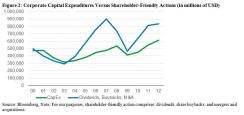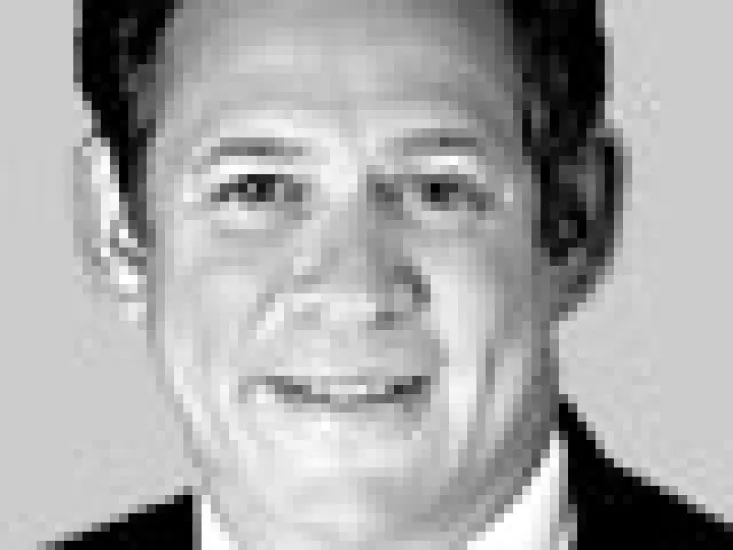In our September 4 column we predicted that the Federal Reserve would have to meaningfully revise its central-tendency real gross domestic growth projections downward for 2013, 2014 and 2015, which indeed it did on September 18, whereas its forward projections for the unemployment rate and inflation remained mostly unchanged. Economic projections from the Fed often overstate real GDP growth potential and often have to be revised downward; this in itself represents a dovish signal.
Still, we argued that the Fed would also modestly reduce its quantitative easing program, which it refrained from doing in September, much to our and the market’s surprise, although we believe that was a missed opportunity for the central bank, particularly since many observers were widely anticipating some degree of QE tapering, which was well priced into market expectations. Moreover, we have long been saying that continued QE hampers true price discovery mechanisms and risks excessively distorting markets through asset price inflation.
Regardless of the timing on tapering and separate from the debates over which individual might next chair the Federal Open Market Committee, the Fed is likely to face headwinds to genuine labor market recovery for a long time to come. This is largely due to two important factors that may temper the beneficial impact of both QE and low policy rate levels when it comes to labor market recovery: the reduced effectiveness of credit in improving economic growth and the structural nature of labor market slack.
Economic growth is highly influenced by aggregate credit levels. GDP growth rates track closely with the growth in credit outstanding, suggesting that for a consumption-led economy the availability and use of credit are vital for keeping the economy moving. As such, a troubling trend that we have witnessed in recent years is a reduction in the marginal efficiency, or effectiveness, of credit in stimulating the economy. Indeed, at this stage, for every $1 increase in credit, we see close to 50 cents in corresponding GDP growth, which is a significant departure from what was seen in the past, when credit would lead to more pronounced market growth.

Why is the effectiveness of credit in stimulating the economy so diminished? There are two primary factors at play here. The first has to do with the changing sources of credit in the U.S. economy, the second with the ultimate uses of the capital raised. Interestingly, we have witnessed profound evolution in the U.S. credit markets during the past few decades, a trend that seems to have been accelerated in the wake of the financial crisis — but not one that was caused by it. The trend was well in place prior to 2007.
Specifically, as we have argued in our recent Fixed Income Market Outlook, there has been a significant secular shift away from bank lending and toward capital markets funding during the past three decades (see Figure 1). For instance, in the early 1980s, bank lending accounted for nearly 80 percent of aggregate credit in the U.S., with the remaining 20 percent derived from credit market debt issuance. Presently, however, bank lending as a share of aggregate credit in the U.S. has declined to roughly 60 percent, with dramatically expanded credit markets accounting for the remaining 40 percent. This dynamic is important since the traditional fractional banking model accounts for a lesser proportion of the aggregate credit markets today, which results in diluting the money multiplier and in reducing the effectiveness of monetary policy transmission mechanisms, thus limiting the impact of policy moves the Fed has made.

Furthermore, how the capital raised through debt issuance, or borrowed from banks, is used by corporations can also impact the effectiveness of credit in improving the economic growth rate. The corporate sector retains a great deal of cash on its balance sheet, from both retained earnings and credit market activity, as it has been reluctant to invest in business expansion in the face of various economic and political uncertainties. That said, during the past several years there has been a growing trend for large corporations to utilize credit market capital to fund share buybacks, dividends and mergers and acquisitions, rather than for capital expenditures on their primary businesses (see Figure 2). With prevailing interest rates so low and economic and political uncertainty running high, this use of capital has made a great deal of financial sense, even if it has held the real economy back in favor of capital market appreciation.
As we stated recently in our Fixed Income Market Outlook, “Put differently, over this period, capital has flowed into the ‘financial economy’ to a greater degree than it has into the ‘real economy.’ In a sense, then, it could be said that capital markets growth supports the ‘wealth effect,’ while bank lending is more likely to add to an ‘income effect,’ whereby the real economy is benefitted more through capital investment and job creation.”
We do not see this dynamic as inevitable, however. If corporate leaders in the U.S. were to witness reduced dysfunction out of Washington with regard to fiscal policy, as well as fewer economic left-tail risks around the globe (for instance, we have recently seen the emergence from recession in Europe and a lower likelihood of a hard landing in China), then the potential for capital markets to contribute to increased core-business expenditures and greater amounts of hiring would be enhanced.
At this stage, aggregate corporate leverage could even be modestly expanded without sacrificing credit standing meaningfully, in our view. Unfortunately, we do not yet appear to be at this point, and, even if greater levels of capital were deployed for primary-business expansion, there are other structural factors that make true labor market recovery a challenge in our present environment. Recognizing the structural nature of the problem is a prerequisite to any policy solution.
Rick Rieder is chief investment officer of fundamental fixed income and co-head of Americas fixed income for BlackRock.
Get more from BlackRock.






